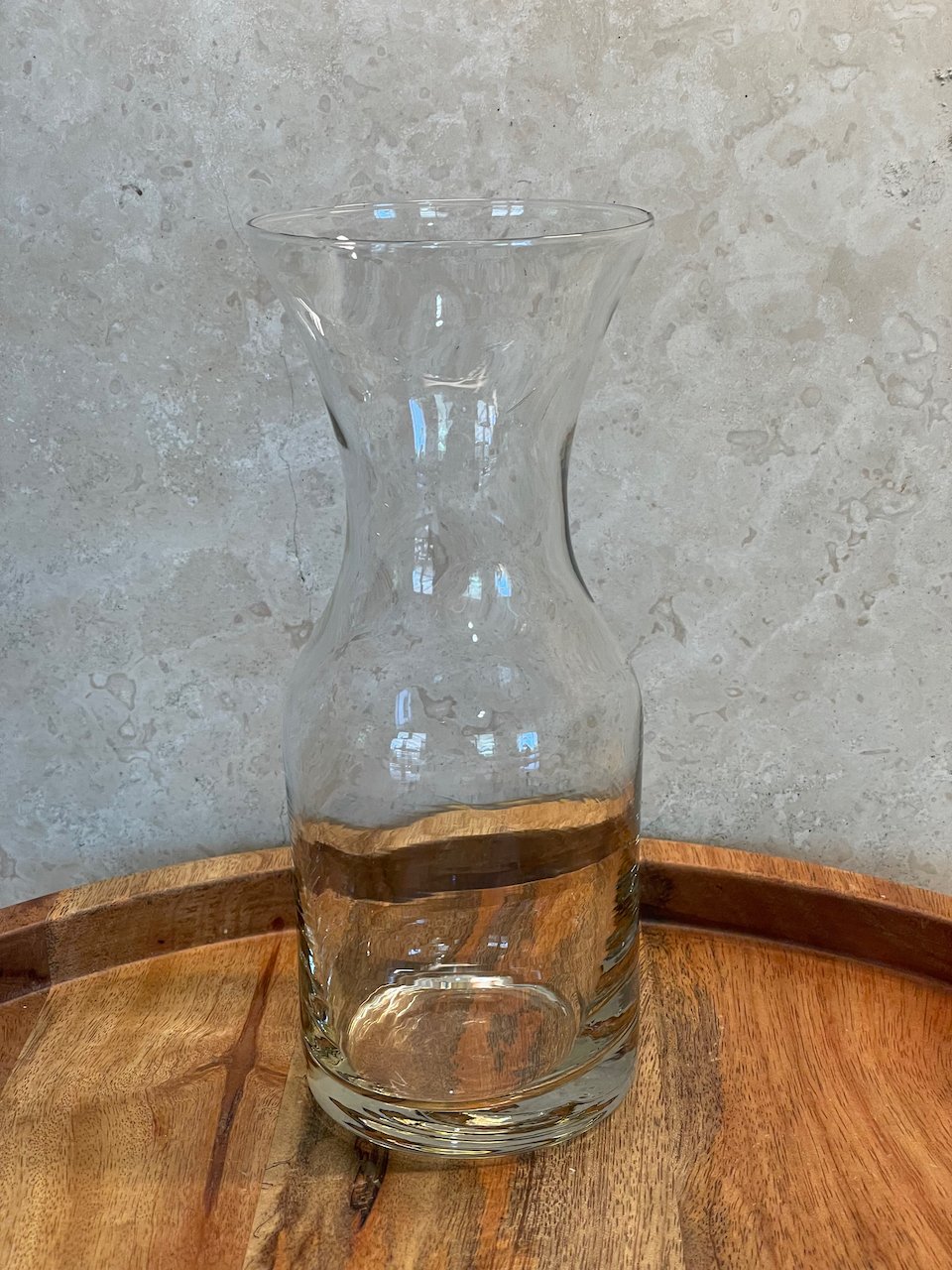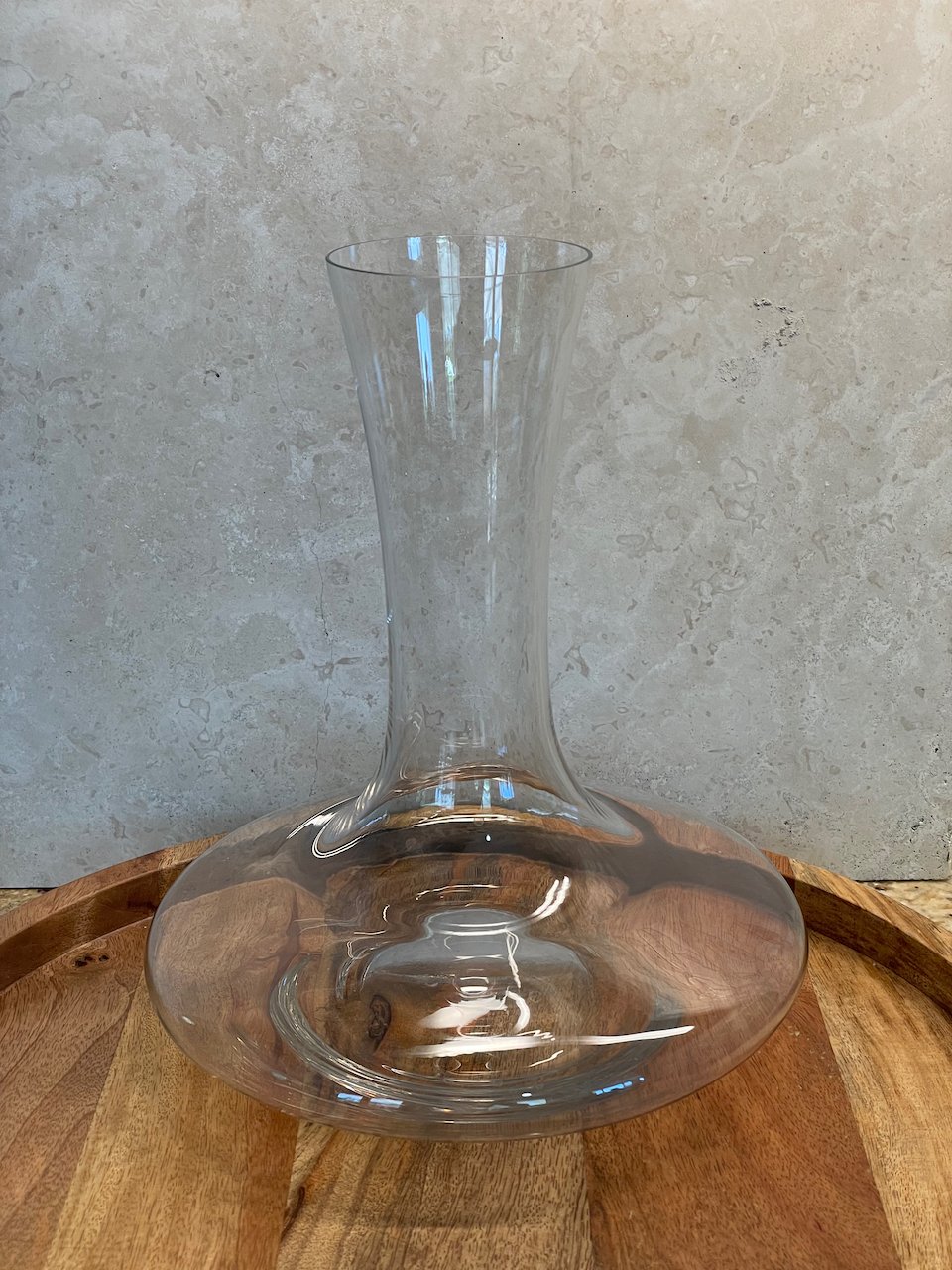Years ago, I was visiting a friend who knew I enjoyed wines and wanted to share a bottle with me. They opened the bottle and took a sip. With a look of disappointment on their face, they proclaimed that the wine need some time “to breathe.” So, with the cork extracted, the bottle sat for an hour. At the end of the hour, the wine was proclaimed to be ready.
I've also encountered those who use a decanter to allow their wine to breathe. But, all too often, the decanter ends up looking like the one pictured here. It's a beautiful carafe and it's a great addition to a bar or table for serving wine. Unfortunately, it's a bit too narrow. It doesn't give the wine enough room to truly breathe. But, compared to leaving the wine cooped-up in its bottle, this type of decanter is a definite improvement. Not only does it give the wine a bit more space, it also allows the wine to catch a bit of a breath as it's being poured from the bottle to the decanter. And, after an hour or two, the wine should begin to show signs of opening up and settling down a bit.
But to really give a bottle of wine a chance to breathe, you'll need some type of decanter that allows the wine to spread out and have a lot of surface area in contact with air. The wide-base decanter pictured here is a great example. And, it's designed such that a single bottle of wine just fills the bottom and allows for the maximum amount of the wine's surface area to be exposed to air.
This whole discussion may leave you asking "Why do you want to intentionally expose wine to air? Doesn't that make the wine go bad?" And, those are great questions. For answers, see my past blogs on "Why Decant Wine?" and "When to Not Decant a Wine."
Here's to enjoying whatever you drink! Cheers!






